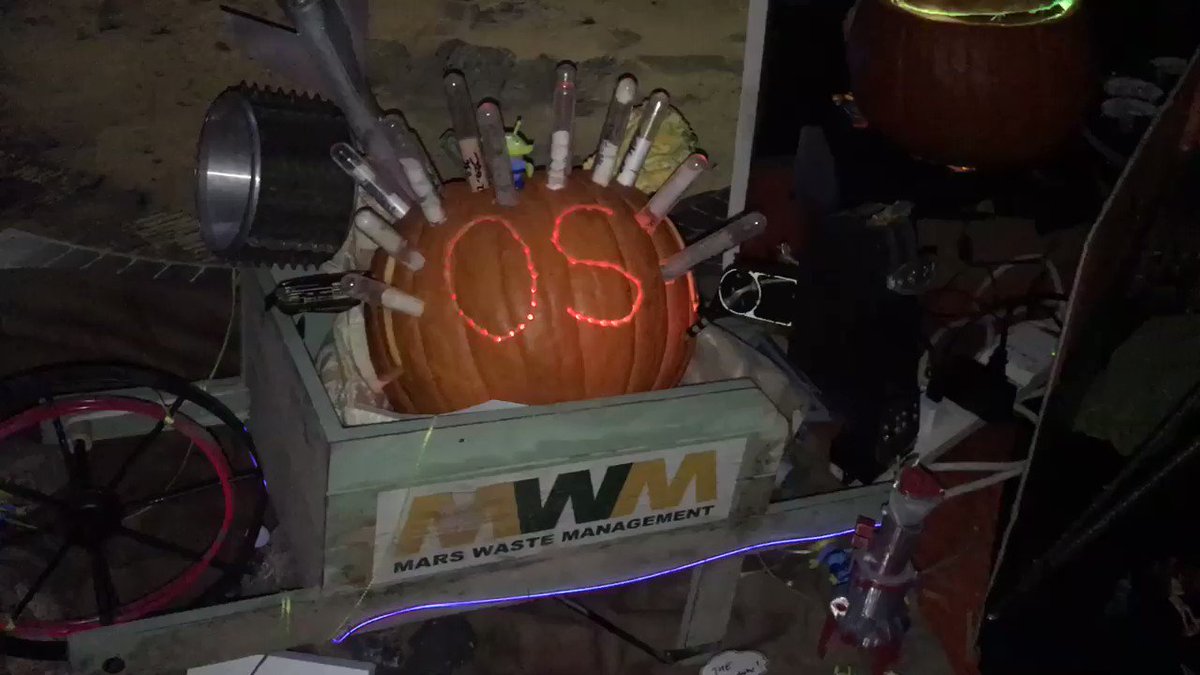It’s that time of year again when NASA scientists compete to make the most creative, the most technologically challenging, and the most impressive pumpkin display of them all. This year, pumpkins spun, floated, and sailed like ships in the seventh annual (unofficial) pumpkin carving contest at NASA’s Jet Propulsion Laboratory.
The rules of the pumpkin carving contest are simple, says Pete Waydo, deputy section manager of spacecraft mechanical engineering at JPL and a judge of the contest. Contestants can pick up their pumpkins a week before the competition and start assembling their displays, but only on the day of the contest can they actually work on their pumpkins — in just one hour. Other than that, Waydo says, “There are no rules.”
The winner this year is a pirate pumpkin ship floating on a sea of dry ice meant to represent Europa, Jupiter’s icy ocean moon. The ship represents a 19th century trading vessel called a clipper ship, a play on the name for NASA’s mission to investigate whether Europa is capable of sustaining life: Europa Clipper.
Another pumpkin in the contest spoke to the fears of many at JPL’s Biotechnology and Planetary Protection Group. That’s the team of people tasked with ensuring that Earth’s microbes don’t travel to other worlds and that alien microbes don’t find their way here. Their pumpkin display is meant to resemble the NASA InSight lander, which is scheduled to launch next year. But here, it’s covered in terrifying, gourd-like spores from Earth.
This flower-shaped pumpkin is an homage to NASA’s starshade, a space-based device intended to make taking photos of exoplanets easier. It’s just a concept right now, but it’s designed to work with space telescopes to shut out distracting starlight and let the dim light of an exoplanet shine through.
If Martians were to collect the wreckage left behind by human explorations of Mars, it would look something like this pumpkin: sticking out is the wheel from the 1997 Sojourner Rover, gadgets from previous missions like the Mars Phoenix lander, “and a bunch of other odds and ends,” Waydo says. There are also models of sample tubes planned for the upcoming Mars2020 mission, to investigate whether microbes ever lived on Mars.
One of Waydo’s favorite pumpkins was created by a team of scientists specializing in entry, descent, and landing of spacecraft. These are the experts on entering Mars’ atmosphere, and landing safely on its surface, Waydo says. The team attached a parachute to their pumpkin, and hovered it over a blower. “It was like one of those indoor skydiving places,” Waydo says. “You could hang the pumpkin there on the parachute and it would free-fly indefinitely there.”





